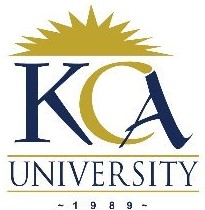
UNIVERSITY EXAMINATIONS: 2018/2019
EXAMINATION FOR BACHELOR OF SCIENCE IN INFORMATION
TECHNOLOGY
BBIT300 BIT3201A DATA WAREHOUSING AND DATA MINING
MODE: FULL TIME/PART TIME/DISTANCE LEARNING
ORDINARY EXAMINATIONS
DATE: NOVEMBER, 2018 TIME: 2 HOURS
INSTRUCTIONS: Answer question ONE and any other TWO
QUESTION ONE [30 MARKS]
a) Define the concept of data warehouse.
2 Marks
b) In the context of data warehousing what is data transformation?
2 Marks
c) Differentiate between slice and dice operations in OLAP.
4 Marks
d) Discuss the characteristics of a data ware house.
4 Marks
e) Explain the use of the knowledge base in a data mining system.
4 Marks
f) Differentiate fact table and dimension table.
4 Marks
g) Briefly discuss THREE schemas for OLAP systems.
6 Marks
h) Differentiate between descriptive and predictive data mining tasks. Give two examples for each.
4 Marks
QUESTION TWO [20 MARKS]
a) Briefly describe the cluster analysis as used in data mining.
4 Marks
b) Explain SIX requirements for cluster analysis.
6 Marks
c) Discuss any FIVE fields where cluster analysis can be applied
5 Marks
d) Discuss any FOUR cluster analysis techniques as used in data mining.
5 Marks
QUESTION THREE [20 MARKS]
a) Discuss the concept of classification as used in data mining.
4 Marks
b) Briefly describe the steps followed classification data mining task.
4 Marks
c) Discuss any THREE classification techniques in data mining.
9 Marks
d) Differentiate between data warehouse and operational databases?
3 Marks
QUESTION FOUR [20 MARKS]
a) Briefly describe the concept of business intelligence.
3 Marks
b) Explain THREE differences between the OLTP (On-Line Transaction Processing) systems and
OLAP (Online Analytical Processing) systems.
6 Marks
c) Discuss at least SIX steps involved in data warehousing.
6 Marks
d) Briefly explain the FIVE primitives for specifying a data mining task.
5 Marks.
QUESTION FIVE [20 MARKS]
a) Briefly explain the concept of data scrubbing.
2 Marks
b) Association rules analysis is a technique to uncover how items are associated to each other. There are
three common ways to measure association: confidence, support and lift. Study the following
transaction table and answer the questions that follow.

i. Calculate and explain the confidence of {Apples->Beer}
3 Marks
ii. Calculate and explain the support for apple.
3 Marks
iii. Calculate and explain the lift of {Apple->Beer}
3 Marks
c) Discuss the role of Apriori principle in association rule mining.
5 Marks
d) Discuss any FOUR dimensions of data quality.
4 Marks